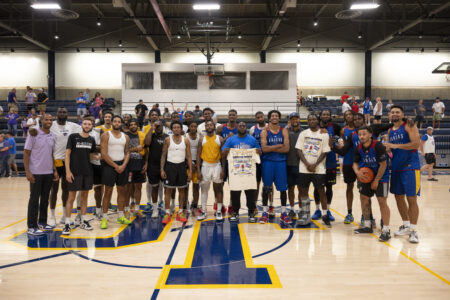NCAA president: Figures ‘eye-opening’
Kansas University has graduation success rate of 68 percent of athletes who entered in 1995-98
RICHMOND, VA. ? NCAA President Myles Brand said the release of new Graduation Success Rate numbers for Division I schools today would be “eye-opening,” showing improvement for most schools because of a better way of measuring success.
The key, he said, was that schools no longer were penalized for having students transfer to other schools the way they were under a flawed federal measurement.
“It turns out, in America today, 60 percent of the student population transfers, and according to the Department of Education, those people don’t count,” Brand said this weekend in Salem, Va., where he attended the Division III football championship.
Under federal guidelines, graduation rates were measured based on the number of students enrolled in a school and the number that earned degrees within six years.
At North Carolina, for example, where four underclassmen left for the NBA after winning the national championship last season, the school would have been penalized under the federal way of measuring success if the players didn’t also get degrees.
The NCAA formula factors in the numbers of students who transfer into and out of schools into the mix, he said, and whether they were doing well while in school.
“These GSR numbers that are going to come out on Monday are going to be eye-openers because once you start counting the transfer students, you get a very different picture of what’s going on academically in Division I,” Brand said, adding that because the Tar Heels players were in good standing academically, they actually helped the school.
“And what’s going to happen is that for about three-quarters of the schools, the graduation rate is going to go up. They’ve been penalized unnecessarily by a flawed system, so we’re going to see graduation rates which are far more accurate go up.”
It will be revealed today that Kansas University has an overall graduation success rate of 68 percent of all athletes who entered school in 1995, ’96, ’97 and ’98.
KU had a graduation success rate of 43 percent in men’s basketball of all players who entered in those years and rate of 75 percent in women’s basketball, 47 percent in baseball and 46 percent in football.
Brand listed academic reform as the biggest issue facing the NCAA, but said the out-of-control athletic spending at many schools was a major concern down the road.
The NCAA had the ability to monitor universities on the academic side, he indicated, but was not allowed to have any input on how a school spent it money on athletics.
“That’s called antitrust,” he said.
Instead, trying to call attention to the problem and bring about reform, the NCAA has assembled a task force of 50 chancellors and presidents from Division I schools to look at the issue and come up with suggested “best practices” for schools to follow.
But those recommendations, he said, only would be suggestions.
“It’s going to have to be done on a voluntary basis,” he said, adding that the hope is that by putting together data to support the case that athletic financing is out of control, boards of trustees and presidents might take action to reign spending in.







